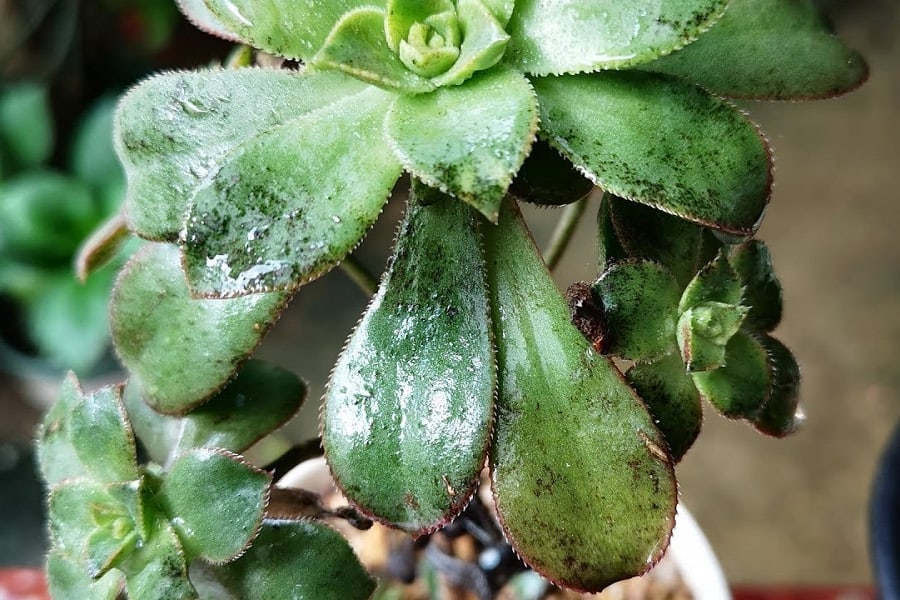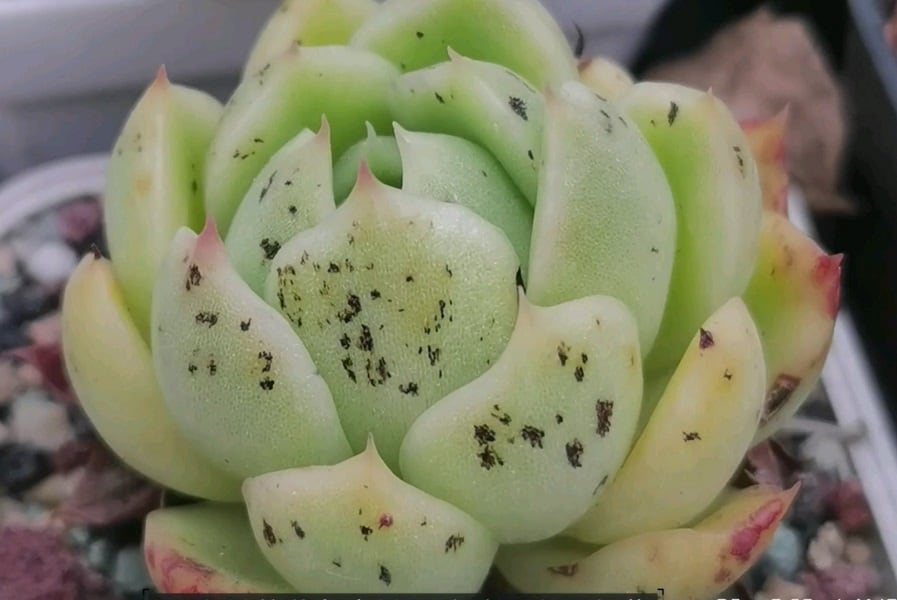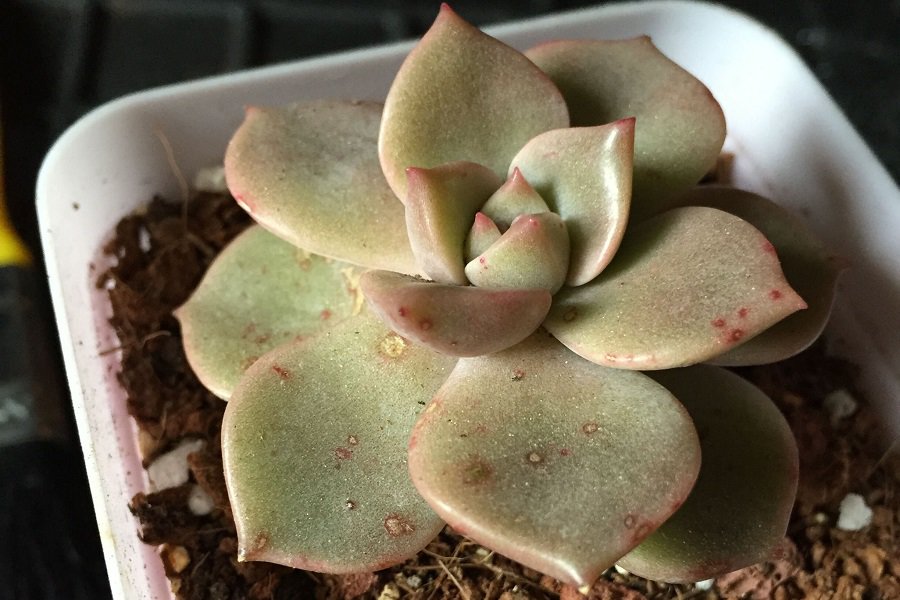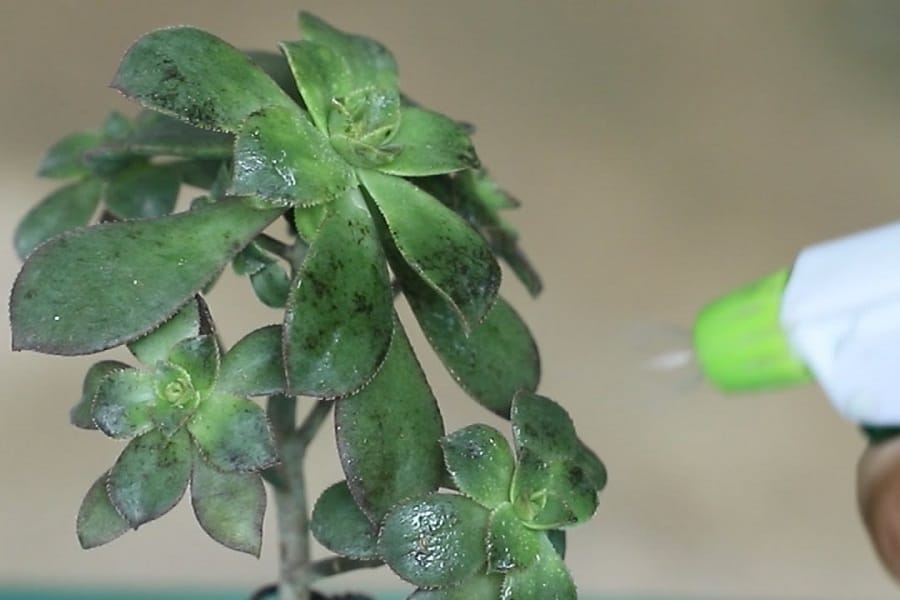Defeat Succulent Fungus: Top 7 Proven Techniques
Succulents are usually quite easy to grow and care for since they can withstand various kinds of conditions. However, it is still possible for them to develop fungus and other kinds of infections. If you want to know how to get rid of succulent fungus, you can go through the measures described below.

Contents
What Does Fungus Look Like on Succulents?
The fungus can take various forms or colors on succulents. You should have a basic idea about this appearance so that you can identify its presence, allowing you to take the necessary steps to get rid of it.
You can go through some common appearances of fungi below.
- It can take the form of a white powdery substance that can appear in the form of a scattered coating or spots on the succulent.
- Black mold usually appears in clusters on the leaves of the succulent, looking like soot or ash. It arises due to pests like mealybugs or scales.
- You might see small but distinct white spots across the surfaces of the succulent leaves. Brown spots might also indicate fungal growth.
- Sometimes, the leaves might droop and wither or the roots might rot, indicating fungal rot or infections.

What Causes Fungus on Succulents?
The following are some of the causes that can lead to fungus on succulents.
1. Lack of Sunlight
Succulents generally need a good amount of sunlight for several hours a day. Without it, the plant will not be able to carry out its regular processes to grow and survive. In this case, it can become quite likely for fungus to form on the leaves or roots.
2. Overwatering
In case you do not water your plant based on its requirements, then this can lead to fungal growth as well. For succulents, in particular, you do not need to keep watering the plant on a daily basis since they have fleshy stems to hold some water.
Thus, if you end up overwatering the plant, it can lead to fungal growth in the soil. This can then lead to root rot, causing the plant to wither and die if you do not take care of it in time.
3. Poor Care
Apart from water and light, succulents need regular care that can include maintaining the level of humidity in the air, controlling the temperature, feeding the plant, cleaning and pruning it as well as keeping pests and diseases away.
This can make it easy for the fungus to grow on the plant.

How Do You Get Rid of Succulent Fungus?
You can get rid of this kind of succulent fungus through the following methods.
1. Baking Soda and Dish Soap
Using a combination of baking soda, dish soap and some warm water can be a good way to get rid of the fungus from your succulents. You can also try using only baking soda and water or only dish soap and water.
Make sure you do not overpower your succulent with this kind of solution since this might damage your plant even more. Once you mix these items together, pour the solution in a spray bottle and spritz your plant a bit with it.
You can then let it sit for a bit and wipe it off with a cloth.
2. Milk Spray
While it might sound strange, milk can actually be a good way to get rid of the fungus from the succulent. You can also use it to reduce the impact on the leaves, making it a good way to prevent the growth of the fungus on the succulent in the first place.
You can also try diluting the milk with some water and then spraying it on the leaves. If you do this every few days, then you can keep your succulents safe and healthy.
This method will work best once the temperatures start getting warmer. This can particularly be effective for powdery mildew on succulents.
3. Neem Oil
Neem oil can be another convenient way for you to get rid of succulent fungus. This can make a good fungicide for succulents while also being largely non-toxic to your plants. In particular, you can use this option to get rid of black mold that looks like soot.
Combining the neem oil with other solutions can be a great way to make the removal process more effective.
However, you should ensure that you do not overdo it with neem oil. Just spraying a small amount of it on the infected area should be enough to get rid of the fungus.
4. Remove Damaged Leaves
In case the fungus has spread throughout one or more leaves on the succulent, then you should cut or pull out the entire leaf from the plant and dispose of it. This is because this leave will no longer be able to contribute to the health of the plant and might even make it worse if the fungal infection spreads to the other leaves.
You can either tug the leaves out using your fingers (if loose enough) or you can use sterilized shears to help you out.
5. Mouthwash
Mouthwash can be another interesting solution that you can use to remove the fungus from your succulents. It might not always work, but it can certainly help reduce the impact as long as you mix it with some water and spray it on the affected areas.

6. Fungicide
In case none of these homemade solutions work for you, then it might be best to buy a commercial fungicide that is strong and effective enough to get rid of the fungus from your succulent plant. Make sure you pick out the right kind of fungicide for succulents by reading through its label.
7. Repot
Once you manage to remove the fungus from your succulent plant, it can be a good idea to repot the plant entirely to one with fresh soil so that you can prevent any remaining fungus in the soil or leaves from spreading.
How Do You Prevent Fungus on Succulents?
You can prevent fungus on succulents through the following ways.
1. Healthy Soil
Your soil should be healthy and suitable enough for the kind of succulent that you have in your house. Make sure that the soil has the necessary nutrients and that you feed it regularly. It should also be well-draining and have the relevant materials to promote healthy growth.
2. Air and Sunlight
Make sure you provide your plant with sufficient air and sunlight based on its requirements. Good air circulation and bright sunlight that is not too overpowering can keep the fungus away from your plant.
Make sure you tweak this a bit depending on the needs of your species.
3. Avoid Overwatering
Overwatering is one of the easiest ways in which fungus can grow and attract itself to your plant since fungi can thrive in pooling water or moist conditions. Make sure you wait for your succulent’s soil to dry out fully before you water it again, especially since succulents have their own mechanism to store water for a long enough time.
4. Clean Off Dust
You should regularly clean out the dust from your plant leaves so that the dust does not form too much of a coating. Brush off this dust using a small and damp cloth once in a while so that you can thoroughly get rid of it.
5. Use Cinnamon
Cinnamon can be another interesting way to prevent the growth and spread of fungus since it can effectively kill it while also closing off the spores. All you need to do here is sprinkle a tiny amount of it in the soil once a month.
6. Selective Pruning
If your succulent ends up growing uncontrollably, then this might make it easier for the fungus to grow, especially since the pot might end up becoming too small to enrich the plant with nutrients. Thus, selective pruning on an annual basis or whenever you spot damaged leaves can help you prevent the growth of fungus.
